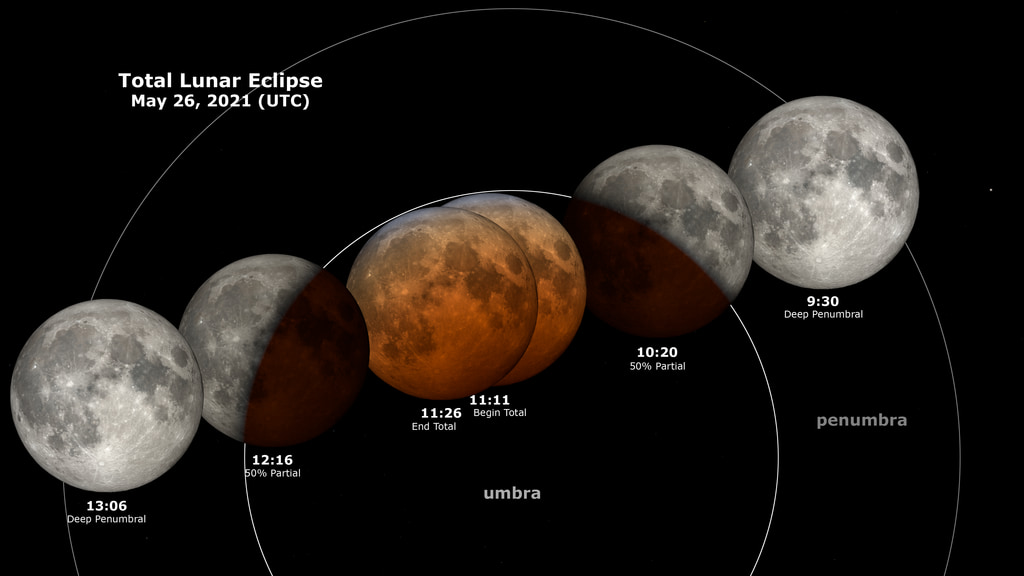Get ready for a total lunar eclipse Australia
All of Australia will have a front-row seat to a total lunar eclipse in two weeks from tonight.
The eclipse will occur on the night of Wednesday, May 26 and it will be visible across Australia (clouds permitting) from coast to coast.
So, what will it look like and how can you see it?
-- What is a total lunar eclipse? --
A lunar eclipse occurs when the Earth passes between the sun and the moon. This alignment causes the moon to be either partially or fully covered by Earth's shadow.
When the whole moon passes through Earth's shadow, this is called a total lunar eclipse.
-- What does a total lunar eclipse look like? --
On any given night, the moon is only visible because it reflects light from the sun towards our eyes. During an eclipse, the moon is shielded from direct sunlight.
You might expect the moon to go completely dark or black when it enters Earth's shadow during a total lunar eclipse. But it doesn't. The moon usually turns red during a total lunar eclipse, which is why they are sometimes called blood moons.

Image: Lunar eclipse times in Coordinated Universal Time (UTC) on May 26. For Australia, add 8-10 hours to these times, depending on your time zone. Source: NASA Scientific Visualization Studio.
This happens because, even though Earth blocks most of the sun's light from reaching the moon during an eclipse, it doesn't stop it all.
- Earth's atmosphere bends some of the sun's light towards the moon during a total lunar eclipse.
- This light indirectly illuminates the moon's surface.
- But our planet's atmosphere also filters out some of the colours at shorter wavelengths, like blue and green.
- This leaves colours with longer wavelengths, such as red and orange, to pass through our planet's atmosphere and continue on towards the moon.
Most total lunar eclipses appear red, but they can also be yellow, orange or brown if there are dust or smoke particles suspended in the Earth's atmosphere.
-- How can you see the eclipse? --
Unlike a solar eclipse, you can view the entire lunar eclipse with your naked eyes. All you need to do it find a spot without clouds and ideally away from city lights.
The moon will also appear larger and more vivid when it's close to the horizon. Below is a nice video made by NASA's Scientific Visualization Studio that shows what the eclipse will look like on May 26.